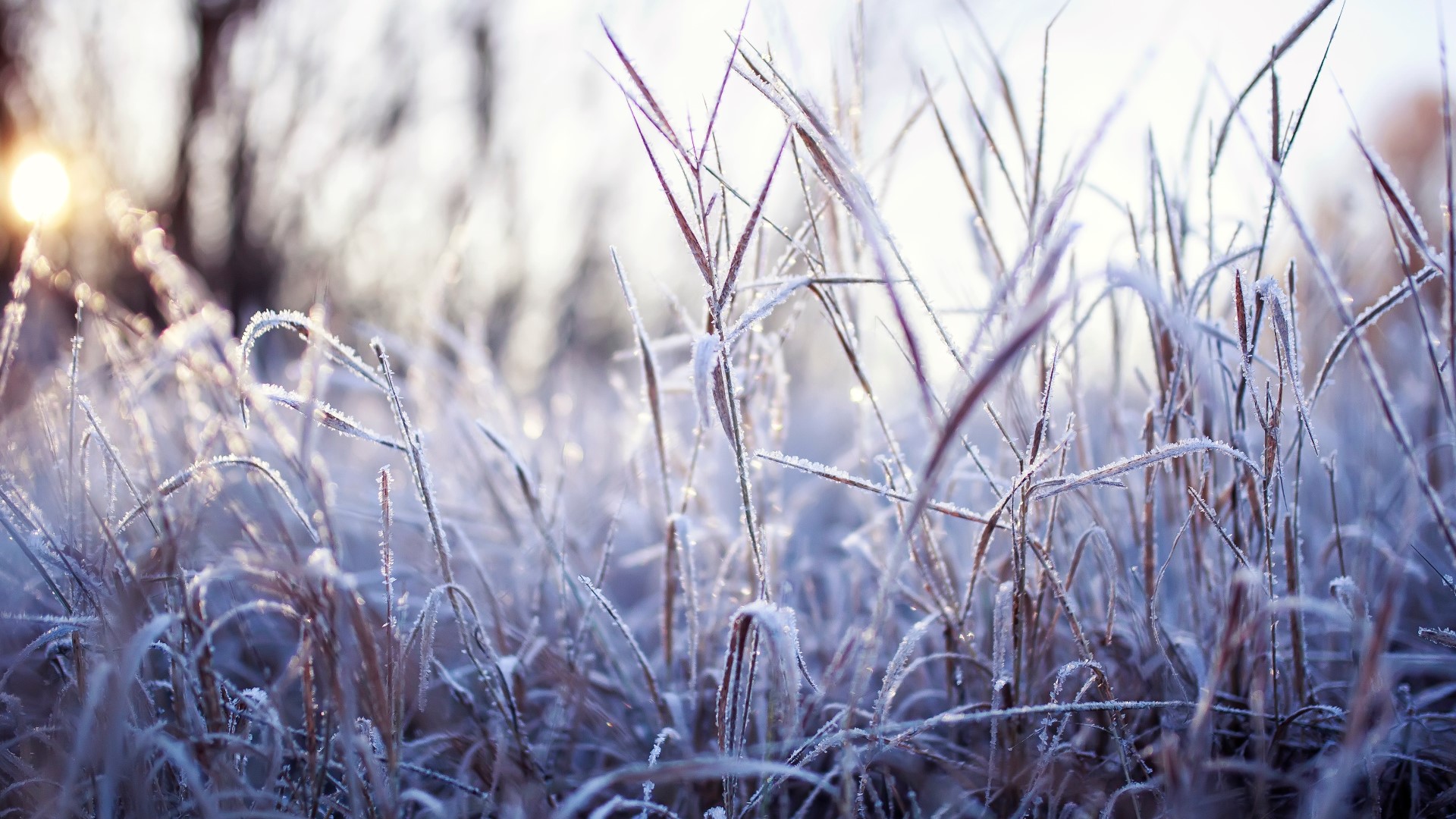Here's how this year's El Niño will impact winter weather in Kentuckiana
With El Niño conditions expected through winter this season, we breakdown past El Niño events to see if there's any influence on our winter weather.
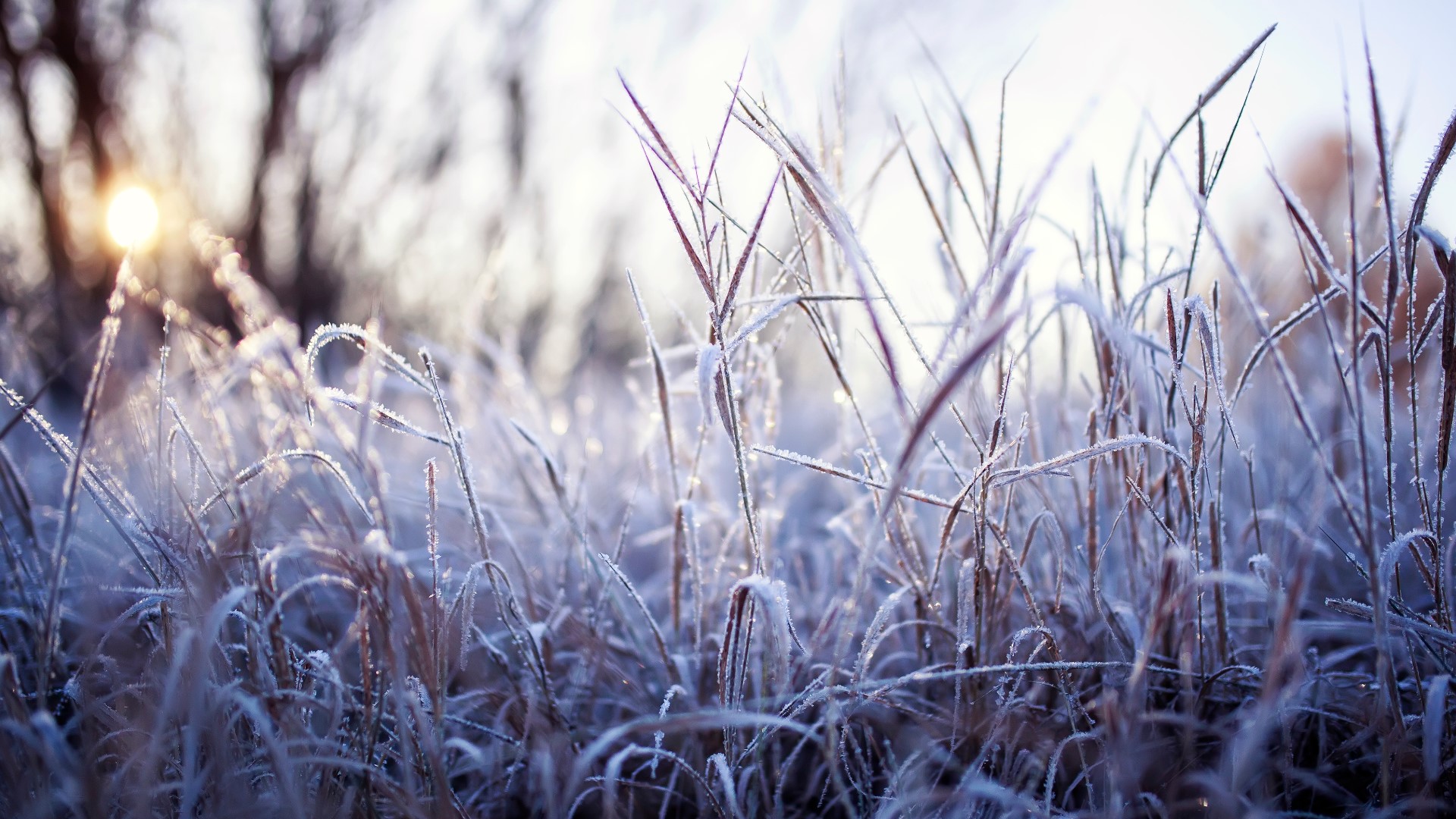
With autumn underway, attention now turns to winter. The big question is always the same: “how much snow will we get?”
That’s always a difficult question and El Niño makes that question even more difficult.
What is El Niño? Understanding the goliath
El Niño has been featured in the headlines a lot this year especially after the Earth had a record-breaking warm summer and parts of the Atlantic Ocean and Gulf of Mexico saw record warm sea surface temperatures, among other weather anomalies this year.
El Niño – and its sister pattern La Niña – is part of a climate pattern known as the El Niño-Southern Oscillation, or ENSO. It occurs in the Pacific Ocean and has global consequences because it changes weather patterns for several months.
El Niño begins to develop between April and June with its peak effects coming in the winter and early spring months. For us in the Ohio Valley, this can mean great changes to expected winter weather patterns.
Under normal circumstances, winds along the equator blow east to west. These are known as the trade winds, which blow warm water from the western coast of South America toward Oceania, Australia, and Asia.
This process stops during El Niño when trade winds weaken.
This has profound impacts across the globe. The warmer equatorial water causes the Pacific jet stream to strengthen and shift south from its usual position during neutral events. When El Niño is not present, the Pacific jet will interact more with the polar jet stream. The jet stream is crucial in precipitation patterns.
El Niño and Louisville's winter weather
The impacts from El Niño (and La Niña) are most noticeable during the winter months in North America. The change in jet stream patterns in El Niño years causes wetter weather in the southern United States from California to the Gulf Coast.
For the Ohio Valley and Louisville area, it's known to cause warmer and drier conditions.
“Known to” is a key phrase here. Each event is different and has varying strengths, so not every El Niño brings us warmer and drier weather. Also important, it’s not just El Niño that influences seasonal weather patterns. There are several other smaller scale patterns that interact with each other to influence the weather we experience.
Let’s analyze the past 16 El Niño events looking at their intensity and snowfall compared to normal in Louisville.

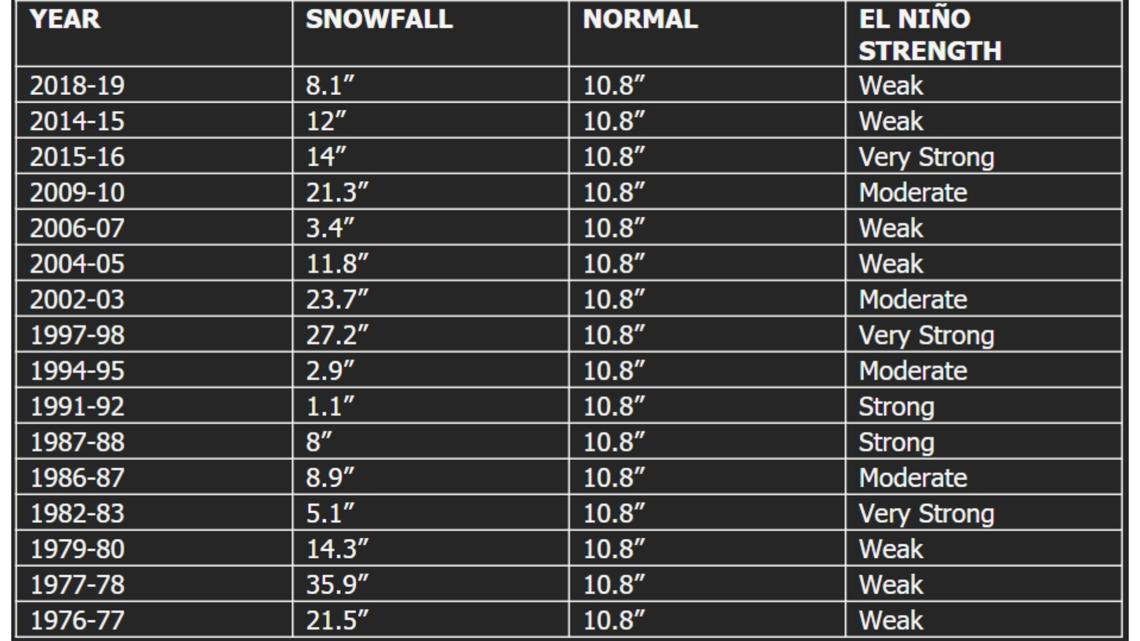
From the table we find that of the previous 16 El Niños, nine years saw above normal snowfall (60%).
Of those nine El Niño events with above average snowfall, five were weak, two were moderate, and two were very strong. Two of the below average events were weak, two were moderate, one was strong, and one was very strong.
El Niño Precipitation and Temperature Patterns
Now we come across a bit of a paradox. As we can see, El Niño seems to result in above average snowfall in Louisville.
That runs contrary to the notion of drier and warmer conditions, right? Perhaps. Snow is only one form of precipitation.
If our area typically sees drier than normal conditions during El Niño winters (again, December-February), let us see if any of the driest of those months on record occurred during an El Niño event.

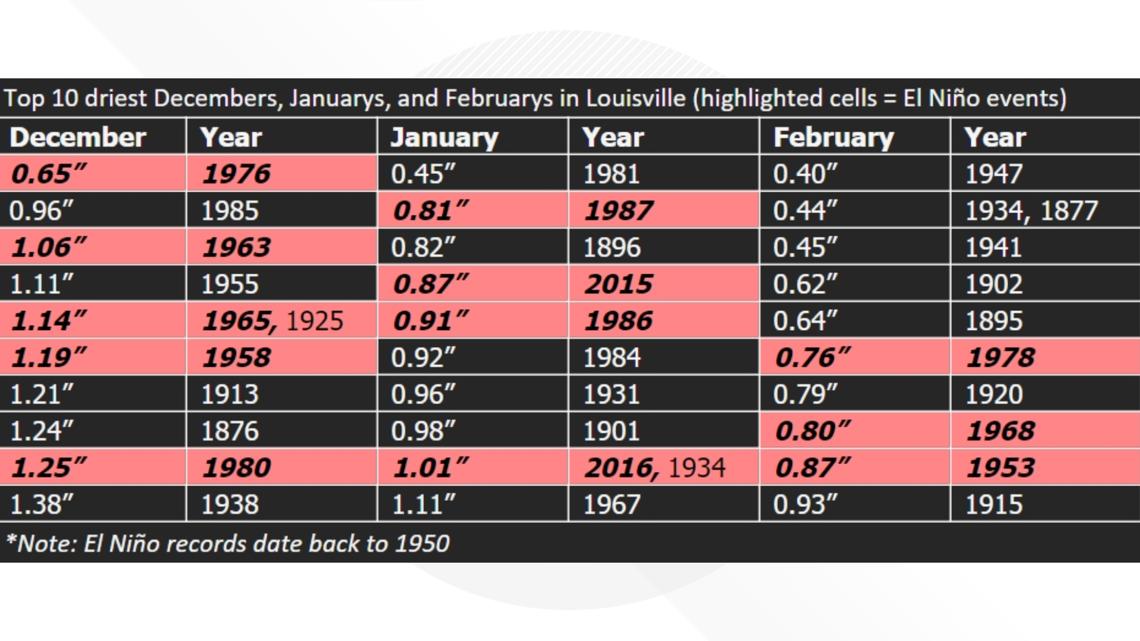
Drawing conclusions from this chart is a bit more difficult because record-keeping of El Niño only dates to 1950 whereas Louisville’s weather records go as far back as the 1870s.
This means we don’t know with certainty whether any of the driest months before 1950 were El Niño events. Years after 1950 that are not highlighted were either La Niña events or neither.
We can still see a theme, however.
Half of the driest Decembers on record occurred during El Niño years. Four of the driest Februarys were during El Niño, while three of the driest Februarys were during one.
It’s interesting to note that the driest December, January, or February during El Niño years decreases by one each month. This may be a coincidence or show the weakening trend of El Niño typically noted heading into the spring months.
It’s also possible that some of the pre-1950 dry months were El Niños, but there’s unfortunately no way to know for certain; it’s possible many more of these driest years were El Niño, but they may also have been La Niña or neutral.

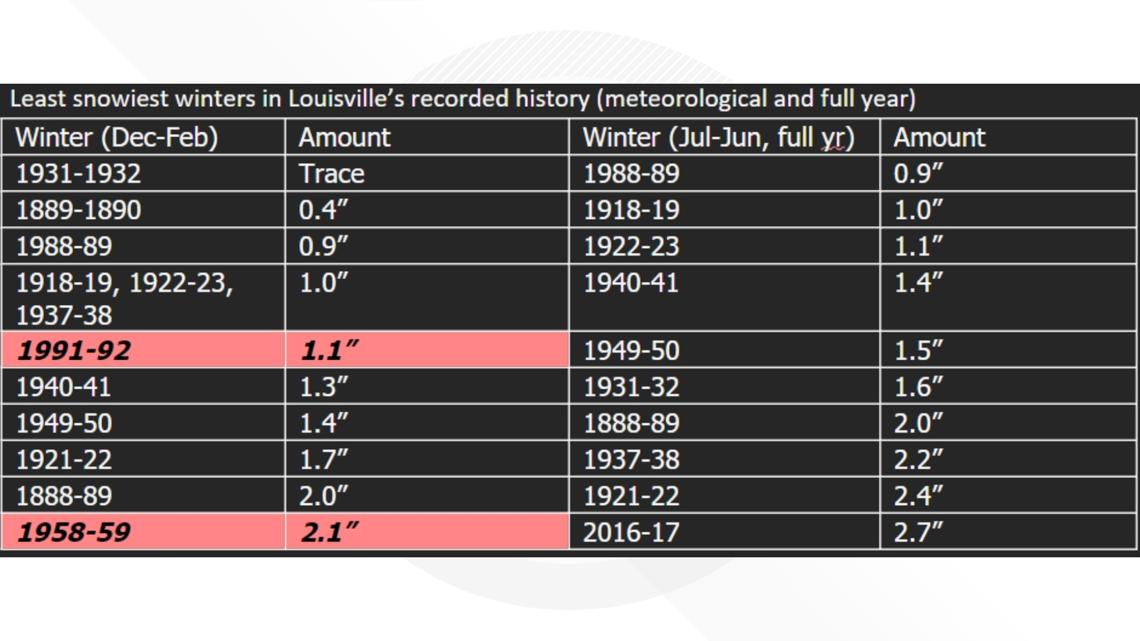
This is another interesting find. Despite individual months showing a tendency toward less snowy winters in El Niños, seasonal winters don’t seem to show that relationship.
Only two of Louisville's ten least snowiest winters were during known El Niño events.
Since 1950 there have been 26 El Niños. The average snowfall from those 26 winters was 13.1” of snow – slightly above average. Some of those winters, such as 1977-78, saw extremely high snowfall. That winter nearly 36” of snow!
The least snowy El Niño winter came in the 1991-92 season when a paltry 1.1” fell in Louisville.
Additionally, there doesn’t appear to be much correlation between El Niño strength and snowfall. 1977-78 was a weak El Niño with abnormally high snow, but 1997-98 was a very strong event that also saw high snowfall. There were also weak events with very little and very high snow totals.
That was a lot of information about snowfall and precipitation, but what about temperatures?
El Niños tend to result in warmer than average winters. Amazingly, in all known El Niño years, none rank in the top ten for warmest ever.

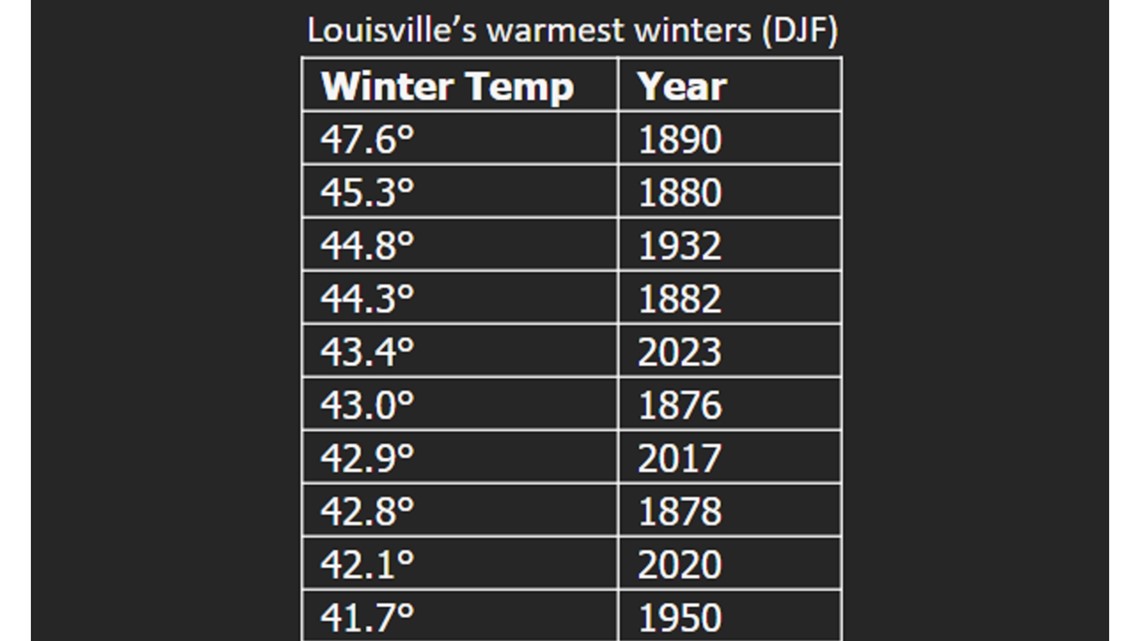
Something worth noting is that half of the top ten warmest winters in Louisville’s recorded history are in the 1800s. Data measurement in the 19th century was not as accurate as today’s technology, but it is worth noting how long these records have stood even with great advancements in meteorological measuring technology.

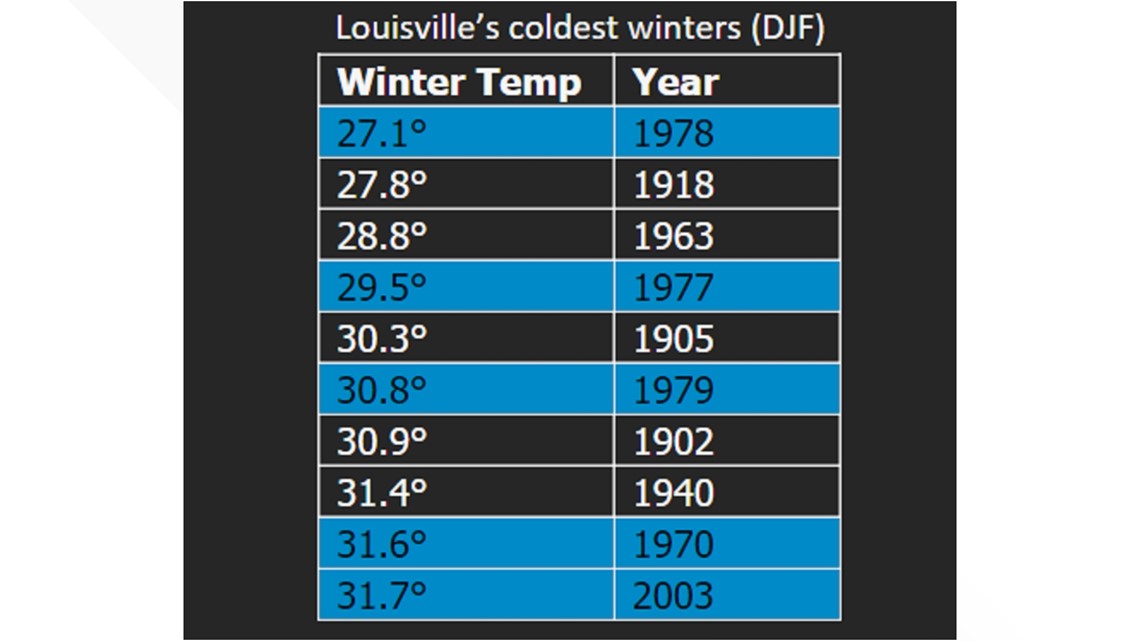
Another apparent contradiction pops up when looking at the Metro's coldest winters: Five of the top ten coldest winter seasons occurred during El Niño events.
Some of these winters were also some of the snowiest on record. This again seems to run contrary to what El Niño “should” be doing.
Conclusion
Remember: El Niño isn’t the end-all be-all when it comes to winter weather. There are many other atmospheric circulation patterns that influence global weather, and some individual weather systems develop in such a way that a location can see a tremendous amount of snow from one storm that skews monthly or seasonal totals.
Looking exclusively at El Niño, however, we notice that Louisville on average seems to experience slightly above normal snowfall.
There are many other variables we didn’t consider such as temperature, rainfall, and a more thorough examination of precipitation overall. Presumably those would follow a similar pattern (or lack thereof) to snowfall.
As for what this winter will bring, only time will tell. September has been an exceptionally dry month in Louisville. It was in the top five driest Septembers ever until a late rain barely knocked it out of the top ten.
This summer was one of the hottest ever recorded on Earth, and the unseasonably warm temperatures stuck around into early October.
El Niño, climate change, extremely warm Atlantic Ocean temperatures, and other factors have all played a role in the unusual weather phenomenon noticed so far this year.
Regardless, it’s likely El Niño will influence our winter weather; how, though, isn’t as straightforward as it might seem.
Make it easy to keep up-to-date with more stories like this. Download the WHAS11 News app now. For Apple or Android users.
Have a news tip? Email assign@whas11.com, visit our Facebook page or Twitter feed.


